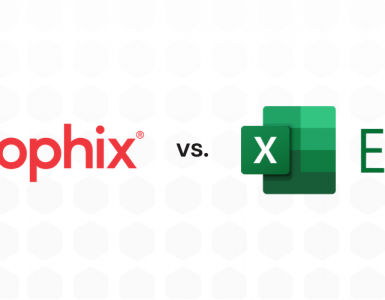
Process excellence
Conventional wisdom says that mid-sized companies have a distinct competitive advantage compared to larger organisations that are encumbered by layers of bureaucracy and unproductive management. But as nimble businesses grow, they can quickly succumb to the pressure for more headcount, driving up operating costs that are difficult to shed. This is why process excellence, innovation and automation are at the heart of the modern finance agenda in mid-sized companies. Smart CFOs know that if they can automate processes at an early stage of their development they will be well positioned to absorb growth without adding to headcount – and that translates into profitability and competitiveness.
 Automation is a potent force for good
Automation is a potent force for good
A recent study of banks reveals just how bloated and unproductive large organizations can become over time – something that is difficult to fix in mature businesses with deeply engrained practices. In one McKinsey study1, a large bank categorized its 900-plus end-to-end processes into three ideal states: fully automated, partially automated, and “lean” manual. This bank determined that 85 percent of its operations, accounting for 80 percent of the current full-time employees (FTEs), could – theoretically – be at least partially automated. At the time of this analysis, fewer than 50 percent of these processes were automated at all. The study concluded that if an ideal level of automation were reached, then almost 50 percent of the FTEs in operations could be relieved of their current back-office tasks. The story compellingly illustrates that automation is indeed a potent force when it comes to keeping the lid on costs.
Another study by PwC2, closer to home as far as mid-sized companies are concerned points to the huge upside potential in relation to automation, especially in Corporate Performance Management (CPM). For example, top performing finance teams spend 17% less time on data gathering and 25% more time on data analysis than typical functions. And for those businesses that invest in technology the prize can be very great. For example, PwC points out that leading finance teams operate at around 40% lower cost (percentage of revenue) than typical finance functions. Put simply, smarter use of technology to drive process standardisation delivers scale efficiencies and enables faster integration of new operations.
However, for larger enterprises burdened by legacy systems transitioning to greater automation is not so straightforward. The key lesson for mid-sized companies is to automate before the onset of rapid change and growth. The question is how?
New CPM solutions are transforming the mid-market
In the past mid-market companies were poorly served by CPM software vendors, the majority of whom still focus almost exclusively on the large enterprise market. Even so, the Hackett Group says, “knowledge-centric” processes, as distinct from transaction systems, are relatively under-served by automation3. Smaller businesses are left to make do with spreadsheets and a variety of databases and manual work-arounds.
Lamentably, 60 percent of organizations (perhaps more) still rely on manual spreadsheet manipulation for reporting2. But the advent of software vendors such as Prophix focussed exclusively on the mid-market is disrupting the status quo. Unified CPM systems that share a common data model, calculation and workflow engine, set the scene for seamless integration, maximum collaboration, process visibility and productivity. As a result, mid-sized companies can enjoy the same benefits of CPM that were once the exclusive preserve of large enterprises. Smart CFOs in the mid-market know that they are no longer competitively the underdog – if they innovate now with advanced CPM systems, they can take advantage of automated processes to drive performance that large businesses can only dream of.
Note #1
McKinsey Insights: Automating the bank’s back office
Note #2
PwC: Putting your business of the front foot. Finance effectiveness benchmark study
Note #3
Technology Enablement: The Critical Role of Technology in Improving Productivity and Efficiency in the Finance Function and GBS Organizations; Finance Executive Insight, Hackett Group,






